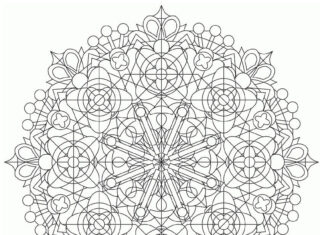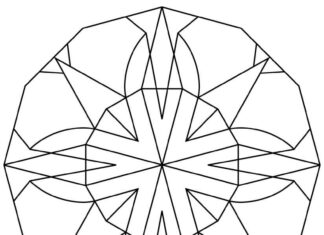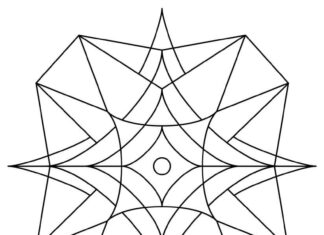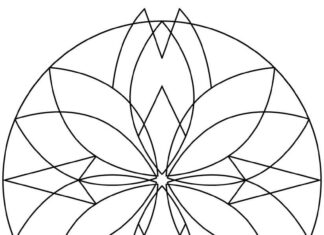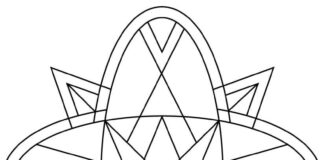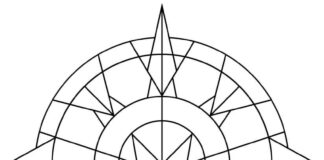A kaleidoscope is an optical device that creates the effect of patterns and shapes using repeated mirror reflections.
Kaleidoscope Coloring Pages
information
- Construction: A traditional kaleidoscope consists of three main components: a tube, mirrors and colored elements such as pieces of glass, crystal or plastic.
- Action: Light enters through one end of the tube and reflects off a set of mirrors inside. The colored elements inside the kaleidoscope form complex symmetrical patterns by reflecting off the mirrors. These patterns change when the kaleidoscope is rotated.
- Visual Effects: Thanks to reflections and symmetry, kaleidoscopes create beautiful and surprising patterns that resemble intricate mandalas and symmetrical figures.
- History: The first kaleidoscopes were invented in 1816 by Scottish scientist Sir David Brewster. The name "kaleidoscope" comes from the Greek words "kalos" (beautiful), "eidos" (shape) and "skopeo" (to observe).
- Educational and Artistic Uses: Kaleidoscopes were used as an educational tool to study symmetry and optics. However, over time they have also become popular art gadgets and toys, available in a variety of designs and sizes.
- Modern Modifications: Today's kaleidoscopes can include additional features such as variable lenses to create even more complex visual effects.
- Inspiration in Art: The effects of the kaleidoscope have been reflected in many works of art, painting, printmaking and design, creating mesmerizing and abstract patterns.
- Therapy and Relaxation: Kaleidoscopic patterns are sometimes used as a tool for therapy and relaxation, helping individuals immerse themselves in beautiful and peaceful patterns.
trivia
- First Kaleidoscope in History: Scottish scientist Sir David Brewster is considered the creator of the first kaleidoscope. He invented it in 1816 and named the device "kaleidoscope," derived from Greek words meaning "beautiful shape observed."
- Infinity Patterns: Thanks to the mirror reflections, the patterns created by the kaleidoscopes seem endless and repeat as the device rotates. This gives the feeling of endless, mesmerizing patterns.
- Popularity as a Toy: Kaleidoscopes have quickly become popular toys among both children and adults. Their magical visual effects attract attention and fascinate.
- Symmetrical Patterns: The patterns generated by kaleidoscopes are often strongly symmetrical and resemble mandala drawings, which are known for their peaceful and meditative nature.
- Variety of Designs: Kaleidoscopes are available in a variety of variations and designs. They can contain different types of colored pieces, shapes and objects, creating unique patterns.
- Educational Application: Kaleidoscopes have been used in education to teach optics, symmetry and patterns. They help understand how light and reflections can create visual effects.
- Creative Inspirations: Kaleidoscopic patterns have found application in many fields of art, including painting, graphic design, textile design and design.
- Electronic Kaleidoscopes: In addition to traditional kaleidoscopes, there are also electronic versions that generate changing patterns on the screen using LEDs and other technologies.
- Virtual Kaleidoscopes: Nowadays, there are even apps and computer programs that allow you to create and view virtual kaleidoscopic patterns on the screen of your device.
- Kaleidoscopes as Inspiration for Designers: Kaleidoscopic patterns and effects are often a source of inspiration for fashion, interior and design designers, creating unique and mesmerizing patterns.


